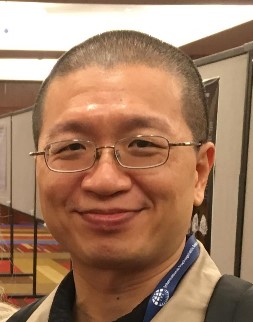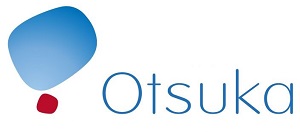Focus Adjustable Smart Lenses
THE FOCUS ADJUSTABLE SMART LENS FOR THE SENILE
Dr. Yung-Jen Yang; Tsaotun Psychiatric Center, Ministry of Health and Welfare, Nantou County, Taiwan
Dysfunctional changes of sensory organs seem inevitable in the elderly population, and these sensory declines absolutely pose serious threats to daily activities, quality of life, and even the safety of the elderly. For centuries, human beings have been inventing various artificial aids, trying to mitigate or even correct these deficits. While the last issue introduced the non-medical bone-conductive hearing aid, this issue will focus on the newly launched “smart glasses.” The main objective of this technological column is to discuss how these glasses can be used to improve sight in senile people.
Presbyopia is a common ophthalmological condition that occurs after middle age and is highly common in those older than age 65. According to a recently published systematic review(1), the global prevalence of presbyopia in 2015 was estimated to be around 25%, and 826 million people with presbyopia had near visual impairment because of the inadequate or lack of vision correction. Astonishingly, the impact of presbyopia is as serious as the global unmet need for presbyopia correction, which in 2015 was estimated to be as high as 45% in the same study.
There have been a variety of choices for correcting presbyopia, including corrective eyeglasses (spectacle lenses), contact lenses, refractive surgery, and lens implants. Wearing spectacle lenses is the most common and favourable choice. These corrective eyeglasses can be applied in many ways, they can be bifocal, trifocal, or progressive multifocal lens. Although these glasses are easy to use, there are still many practical issues for those who are both old and myopic. The difficulties and inconveniences in changing focus have increased the need for so-called “smart glasses,” which can are frequently found in the science fiction or comics.
In early 2018, a Japanese company, Mitsui Chemicals Inc., developed and launched stylish smart glasses with the capability of in-demand adjustable focuses on the same lens. The adjustable lens takes advantage of a technology called liquid crystal, which was developed in the 1970s(2). The theory of liquid crystal is illustrated in the simplified figure (Figure 1a-1b). By adjusting the electric voltages between electrodes, the particles of the “liquid crystal material” inside the lens will change their alignment and thus change the shape of the lens, thereby adjusting focus. Here are some reviews that will aid interested readers to a more in-depth understanding of the rationale and mechanisms.(3-5) Despite theory and mechanism, the applications of such techniques to the daily life was once hindered by technological limitations until the breakthroughs of nanotechnology in the recent decade.
The focus-adjustable glasses, TouchFocusTM (See Figure 2a-2b), are the latest application of such technology to daily life. For its practicability and exquisite shape, it has won the 2018 Good Design Award, being listed as a Good Design Best 100, they have attracted a lot of focus in the world of technology. According to the literature, smart glasses can instantaneously change far to near vision at the “reading zone” in lens where the liquid crystal technology works. The manufacturer claims that TouchFocusTM glasses are free from the inconvenience and discomfort when using the multifocal lens. TouchFocusTM glasses are currently available in the market, interested readers should visit the official website (https://www.touchfocus.com) for more details.
With the first commercial product of liquid crystal technology, the author believes that there will be similar products on the way soon, such as the liquid crystal contact lens. Stay tuned for future developments in this field.
References:
- Fricke TR, Tahhan N, Resnikoff S, Papas E, Burnett A, Ho SM, et al. Global Prevalence of Presbyopia and Vision Impairment from Uncorrected Presbyopia: Systematic Review, Meta-analysis, and Modelling. Ophthalmology. 2018;125(10):1492-9.
- Andrienko D. Introduction to liquid crystals. Journal of Molecular Liquids. 2018;267:520-41.
- Susumu S. Liquid-Crystal Lens-Cells with Variable Focal Length. Japanese Journal of Applied Physics. 1979;18(9):1679.
- Fowler CW, Pateras ES. Liquid crystal lens review. Ophthalmic and Physiological Optics. 1990;10(2):186-94.
- Lin Y-H, Wang Y-J, Reshetnyak V. Liquid crystal lenses with tunable focal length. Liquid Crystals Reviews. 2017;5(2):111-43.
 Dr. Yunh-Jen Yang is an experienced senior geriatric psychiatrist at the Tsaotun Psychiatric Center in Middle Taiwan. Currently he is a member of Board of Director of the Taiwanese Society of Geriatric Psychiatry and a lifetime member of the IPA. He has special interests in long-term care and new technology.
Dr. Yunh-Jen Yang is an experienced senior geriatric psychiatrist at the Tsaotun Psychiatric Center in Middle Taiwan. Currently he is a member of Board of Director of the Taiwanese Society of Geriatric Psychiatry and a lifetime member of the IPA. He has special interests in long-term care and new technology.
Excerpted as reprint from the IPA Bulletin, Volume 35, Number 4
IPA Members can download the full PDF issue here









